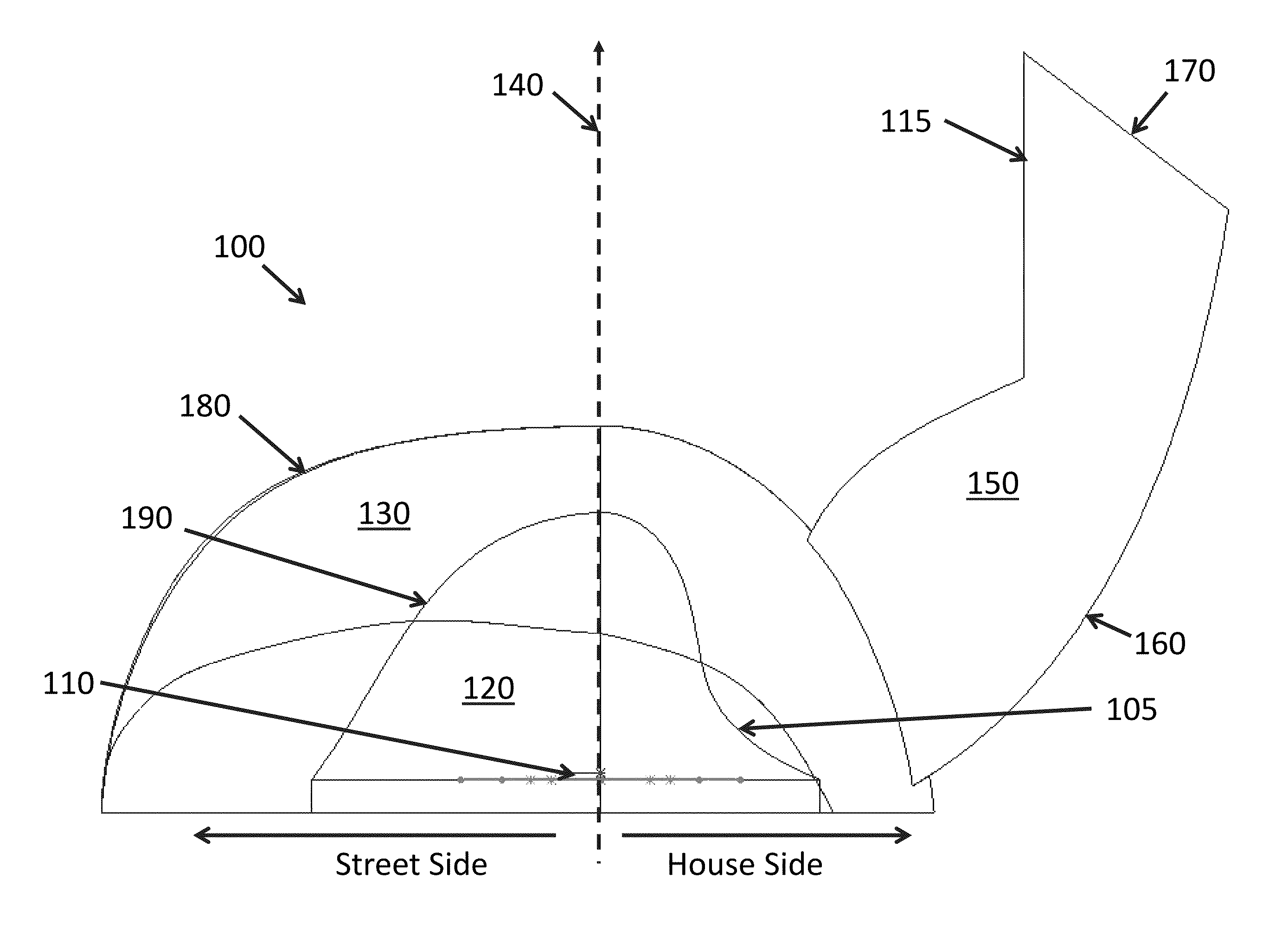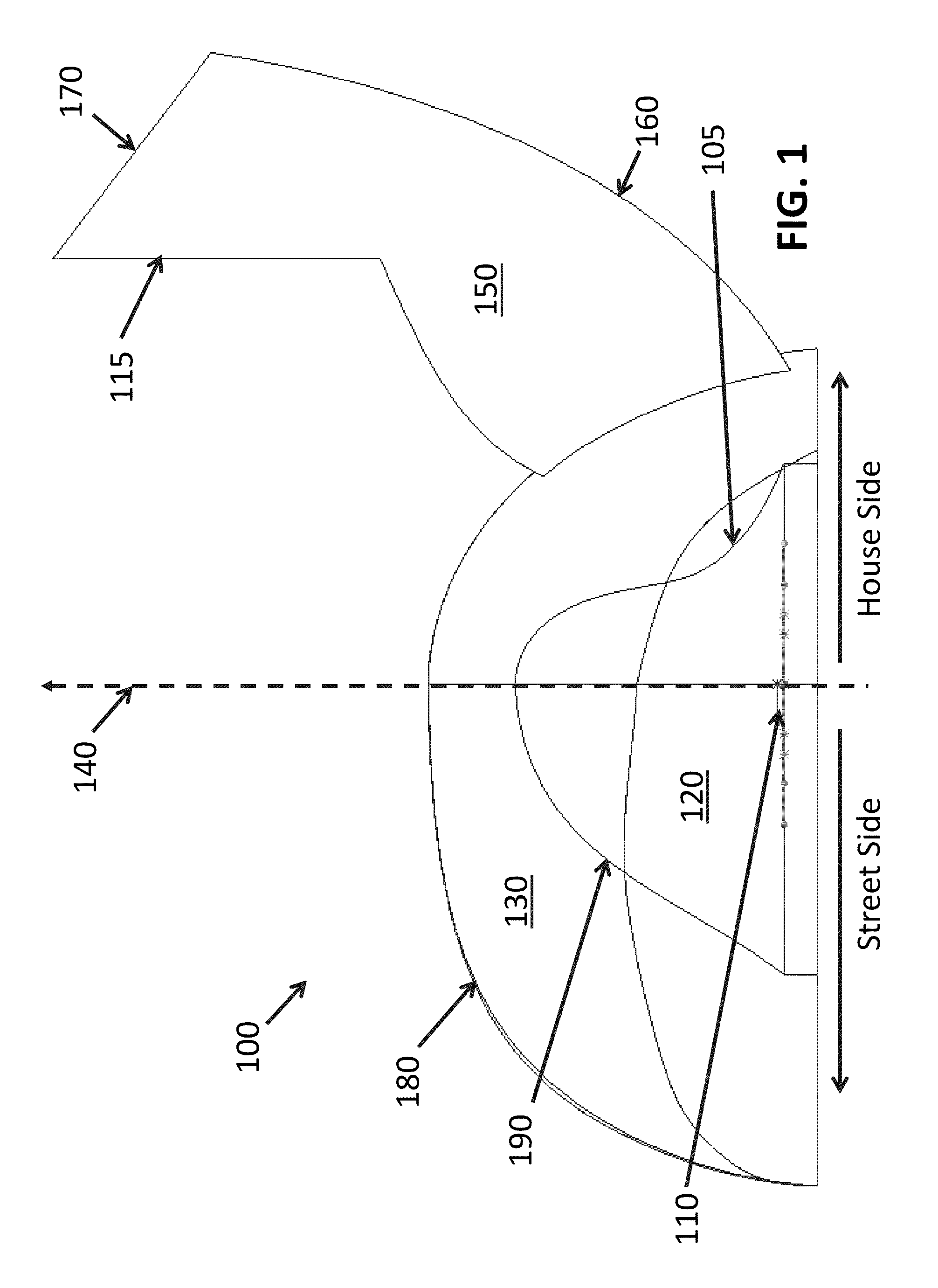Method and system for redirecting light emitted from a light emitting diode
a technology of light emitting diodes and redirections, which is applied in outdoor lighting, semiconductor devices of light sources, lighting and heating apparatus, etc., to achieve the effect of reducing the divergence of light and facilitating the redirection of ligh
- Summary
- Abstract
- Description
- Claims
- Application Information
AI Technical Summary
Benefits of technology
Problems solved by technology
Method used
Image
Examples
Embodiment Construction
[0013]A light source can emit light. In certain embodiments, the light source can be or comprise one or more light emitting diodes, for example. The light source and / or the emitted light can have an associated optical axis. The light source can be deployed in applications where it is desirable to bias illumination laterally relative to the optical axis. For example, in a street luminaire where the optical axis is pointed down towards the ground, it may be beneficial to direct light towards the street side of the optical axis, rather than towards a row of houses that are beside the street. The light source can be coupled to an optic that receives light propagating on one side of the optical axis and redirects that light across the optical axis. For example, the optic can receive light that is headed towards the houses and redirect that light towards the street.
[0014]The optic can comprise an inner surface facing the light source and an outer surface facing away from the light source,...
PUM
 Login to View More
Login to View More Abstract
Description
Claims
Application Information
 Login to View More
Login to View More - R&D
- Intellectual Property
- Life Sciences
- Materials
- Tech Scout
- Unparalleled Data Quality
- Higher Quality Content
- 60% Fewer Hallucinations
Browse by: Latest US Patents, China's latest patents, Technical Efficacy Thesaurus, Application Domain, Technology Topic, Popular Technical Reports.
© 2025 PatSnap. All rights reserved.Legal|Privacy policy|Modern Slavery Act Transparency Statement|Sitemap|About US| Contact US: help@patsnap.com



